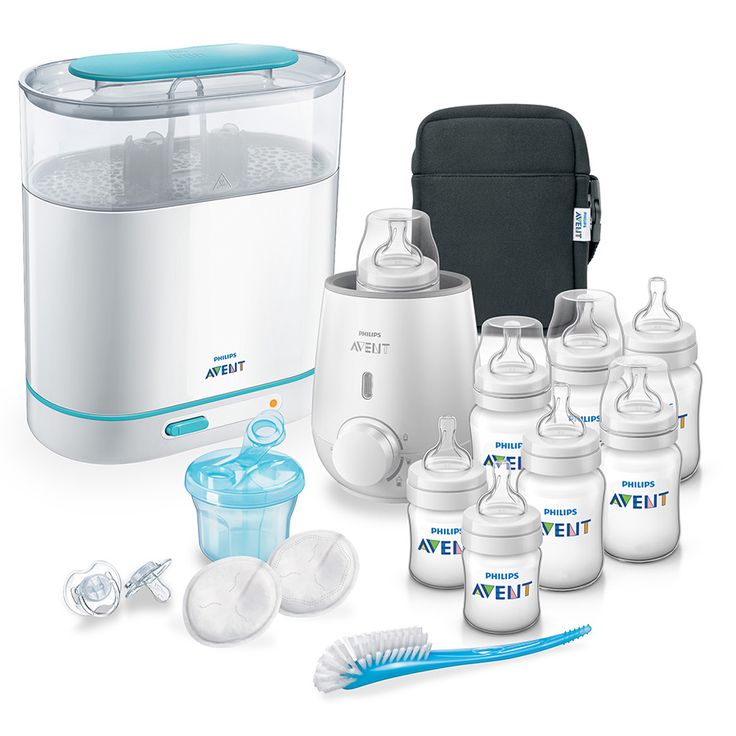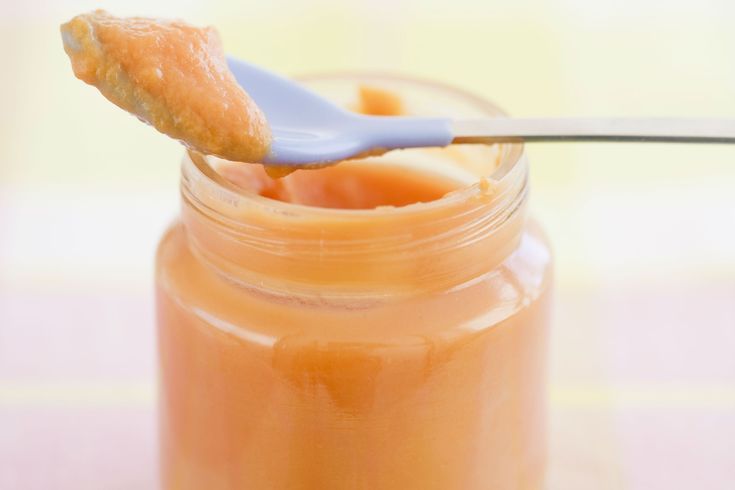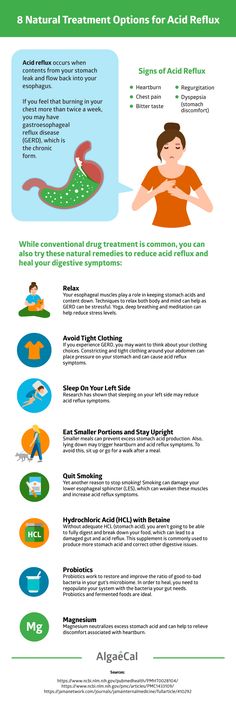How to feed a newborn baby squirrel
What to Feed a Newborn Squirrel
By Michelle A. Riverai John Foxx/Stockbyte/Getty Images
If you've found an orphaned newborn squirrel and are not near a wildlife rehabilitation sanctuary, your work is cut out for you. These cute little guys are a handful. Your chances of saving the life of a neonate squirrel without a mother are pretty slim, according to David Hitzig, executive director of Busch Wildlife Sanctuary in South Florida. That doesn't mean you can't try.
First Things First
i Photodisc/Photodisc/Getty Images
Before you attempt to feed a newborn squirrel, you must ensure several things if your hard work is going to have any chance of paying off. Be sure the mother is not around and that the squirrel is truly orphaned. Once you're sure, warm the baby immediately by wrapping him in a soft cloth and holding him against your body. Baby animals don't generate their own body heat, so getting his core temperature up is imperative. Check for injuries; dip the squirrel gently in a warm bath if necessary.
Hydration
Whether the newborn squirrel is too weak to sustain life is a valid concern, but a baby squirrel cannot digest the proteins and solids in milk unless the baby is well hydrated. Purchase a supply of unflavored Pedialyte at any drug or grocery store. This product contains all the electrolytes and hydrating properties a baby squirrel's body requires. If you can't acquire Pedialyte, make your own solution by combining a half-teaspoon of salt and 1 1/2 tablespoons of sugar with 2 cups of warm water. This is just a temporary fix until you can get Pedialyte.
Feeding Times
Using a syringe or a baby animal nursing bottle, gently administer the hydration solution into the baby's mouth. Be very careful and go slowly. After about two hours, see if you can get the baby to urinate. You should see some light yellow urine when you stimulate the squirrel's genitals with a warm, moist piece of terrycloth or a cotton ball. Once the baby is producing urine, you can move on to solid food.
A Squirrel's Food Pyramid
A newborn squirrel needs mother's milk to survive. It contains everything a baby animal needs to grow fast, strong and with a healthy immune system. To substitute mother's milk, purchase puppy milk replacement formula. Never use milk sold for human consumption, including soy milk. If you use anything but puppy or wildlife milk replacer, you risk giving the baby diarrhea, and you're back to the dehydration problem with a big mess on your hands.
Beyond Newborn
i Jupiterimages/Photos.com/Getty Images
If the baby squirrel has survived the bottle-feeding stage and you are switching him over to solid food, it's critical to find the right formula. Before you release the squirrel back into the wild, feed him rodent blocks and pellets, then move on to fruits, nuts and seeds.
References
- Orphaned Wildlife Care: Care for Orphaned Squirrels
Resources
- SquirrelNet.com: Intro to Squirrels 102: "Proper Care of an Orphaned Squirrel"
Photo Credits
Writer Bio
Michelle A. Rivera is the author of many books and articles. She attended the University of Missouri Animal Cruelty School and is certified with the Florida Animal Control Association. She is the executive director of her own nonprofit, Animals 101, Inc. Rivera is an animal-assisted therapist, humane educator, former shelter manager, rescue volunteer coordinator, dog trainer and veterinary technician.
Rivera is the author of many books and articles. She attended the University of Missouri Animal Cruelty School and is certified with the Florida Animal Control Association. She is the executive director of her own nonprofit, Animals 101, Inc. Rivera is an animal-assisted therapist, humane educator, former shelter manager, rescue volunteer coordinator, dog trainer and veterinary technician.
How to Feed an Orphaned Baby Squirrel
By Heather Vale | Updated November 01, 2017If you have a baby squirrel whose mother has died or stopped caring for it, you need to feed and nurture it on your own. This is a challenge that regularly faces wildlife rehabilitators, and as a pet owner you can follow their proven techniques.
Determining Age
The first step in caring for a baby squirrel is to determine how old it is. Different squirrel species mature at different rates, but the common Eastern grey squirrel that lives throughout America has foolproof milestones for figuring out age.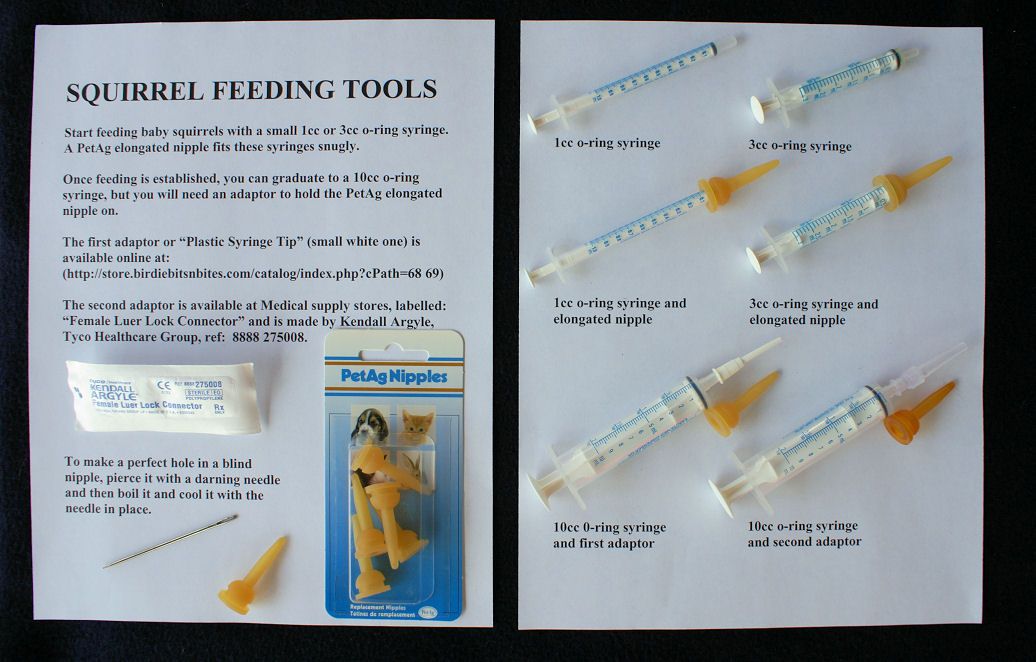
- If your infant squirrel is pink and hairless, he's a newborn. Squirrels start to grow hair at 7 days old.
- If his eyes are closed and his ears are flat against his head, he's less than 3 weeks old. A squirrel's ears begin to open at 3 weeks and fully lift up at 4 weeks. His eyes begin to partially open as early as 3 weeks old, but don't fully open until 5 weeks.
- Lower teeth emerge at 4 weeks and upper teeth at 5 weeks.
- By 6 weeks old, your baby squirrel starts to sit upright and resemble a small adult squirrel.
Rehydrating a Newborn
Warnings
A newborn squirrel can quickly become dehydrated when not cared for by his mom, so before you start feeding him you need to rehydrate him. He will not be able to digest his food properly if you skip this step and go straight to feeding.
Things You'll Need
Fruit-flavored or unflavored Pedialyte or other infant hydrating fluid
Eye dropper or small syringe
Gently pinch the infant's skin and see if it remains tented, or immediately returns to normal. If it quickly flattens out, he's only slightly dehydrated, and should be fed only Pedialyte for 6 hours. If it tents for a little while but then returns to flat, hydrate with Pedialyte for 8 hours. If it stays tented for an extended period of time, he is severely dehydrated and needs to be rehydrated for at least 12 hours.
If it quickly flattens out, he's only slightly dehydrated, and should be fed only Pedialyte for 6 hours. If it tents for a little while but then returns to flat, hydrate with Pedialyte for 8 hours. If it stays tented for an extended period of time, he is severely dehydrated and needs to be rehydrated for at least 12 hours.
Hold the baby squirrel upright in one hand -- never lay him on his back for feeding. Fill the eye dropper or syringe with Pedialyte and feed the squirrel as much fluid as he will take, until his belly is full and round but not overly bloated. If he drinks healthily, repeat this process every 1 1/2 to 2 hours for the designated amount of time. If he refuses to take much liquid, give him more every 30 minutes until he is drinking steadily and then start normal treatment.
Feeding the Infant
Things You'll Need
Powdered or pre-mixed Esbilac puppy milk replacer
6 cc syringes
After the first 6 to 12 hours, you can start feeding your baby squirrel a milk-replacement formula.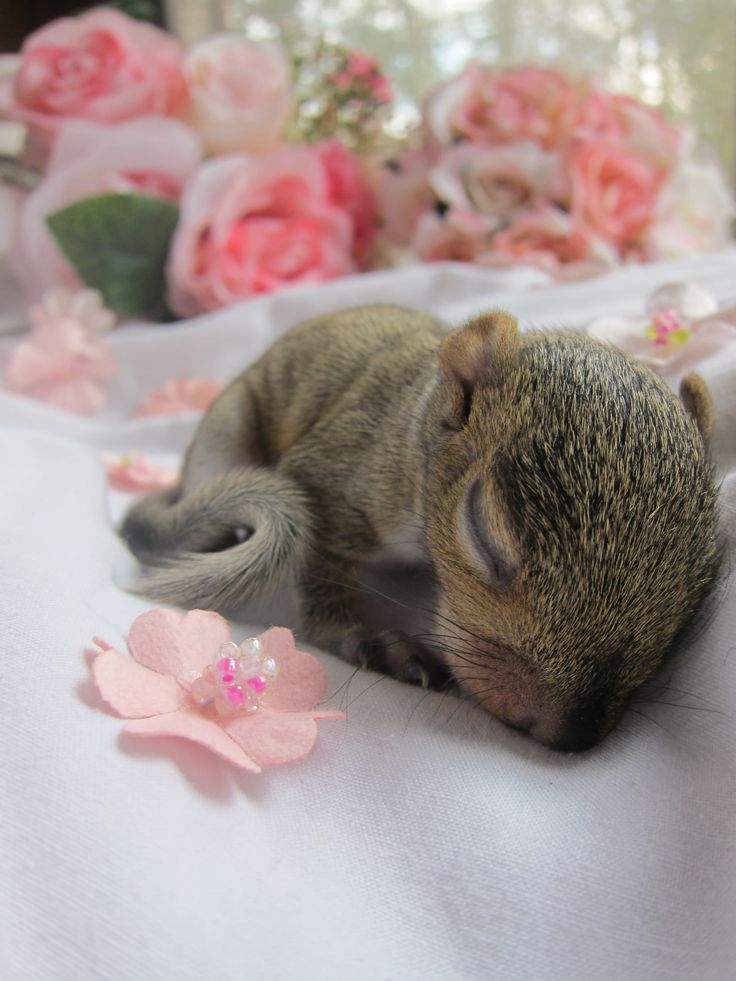 Esbilac is made for puppies, but it has the correct formulation for baby squirrels.
Esbilac is made for puppies, but it has the correct formulation for baby squirrels.
Mix one part Esbilac powder to four parts lukewarm water for the first feeding -- if your Esbilac is premixed, dilute it with equal parts water. At each subsequent feeding introduce one more part powder until your formula is the standard one part Esbilac to two parts water.
- If the baby squirrel is up to 2 weeks old, feed him 1 to 4 cc every two hours.
- From 2 to 6 weeks, feed him 4 to 6 cc every 3 to 4 hours.
Warnings
If formula bubbles out of the baby's nose, he is aspirating and in danger of getting pneumonia -- back off feeding and tip him forward to allow the liquid to drain out. When you return to feeding, go slowly and let him suck at his own pace.
Feeding the Older Baby
Things You'll Need
Esbilac
Rodent food such as hamster mix or rodent block
Hard-shelled nuts with shells removed
Fresh fruits and vegetables
Feeding bowl
Soft towel
At 6 weeks old, when the squirrel's eyes have been opened for a week, start feeding him small cubes of bread that have been soaked in Esbilac formula.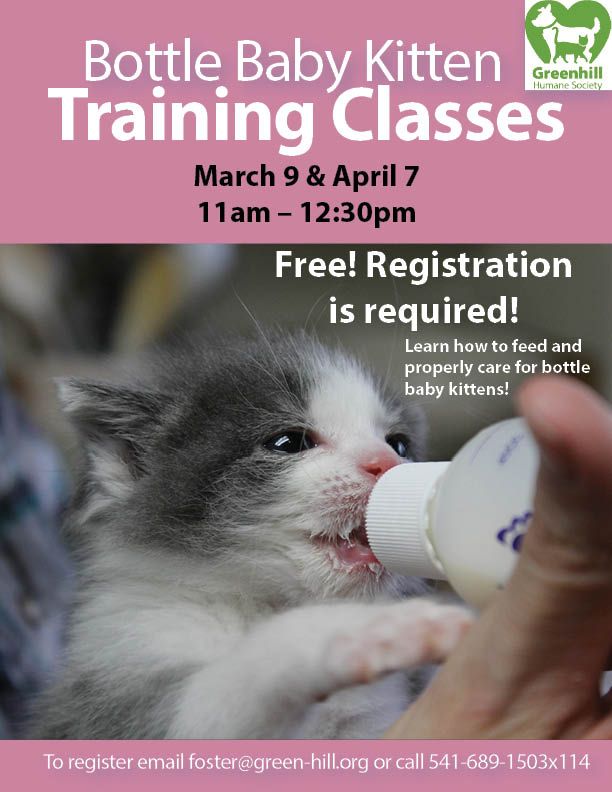 Expect him to get quite messy while eating this mixture. Dried formula on his fur will cause it to fall out, so it's important to wash the formula off his fur and dry him gently with a soft towel after each feeding.
Expect him to get quite messy while eating this mixture. Dried formula on his fur will cause it to fall out, so it's important to wash the formula off his fur and dry him gently with a soft towel after each feeding.
Also offer a good quality rodent food and nibble foods such as unsalted nuts without shells, cubed fruits like apples and grapes, and small pieces of vegetables including broccoli, kale and sweet potato.
At 7 or 8 weeks old, spread peanut butter between two slices of bread before cutting it into cubes and soaking it in Esbilac. Once he can stand up on his own and pick up food in his paws, feed him these little sandwiches without the milk.
Your baby squirrel needs to continue receiving formula several times a day until he is 9 or 10 weeks old. If he is eating well on his own, you can start cutting one feeding every few days until he is no longer taking formula.
Waste Elimination
Baby squirrels do not need to be burped like baby humans do.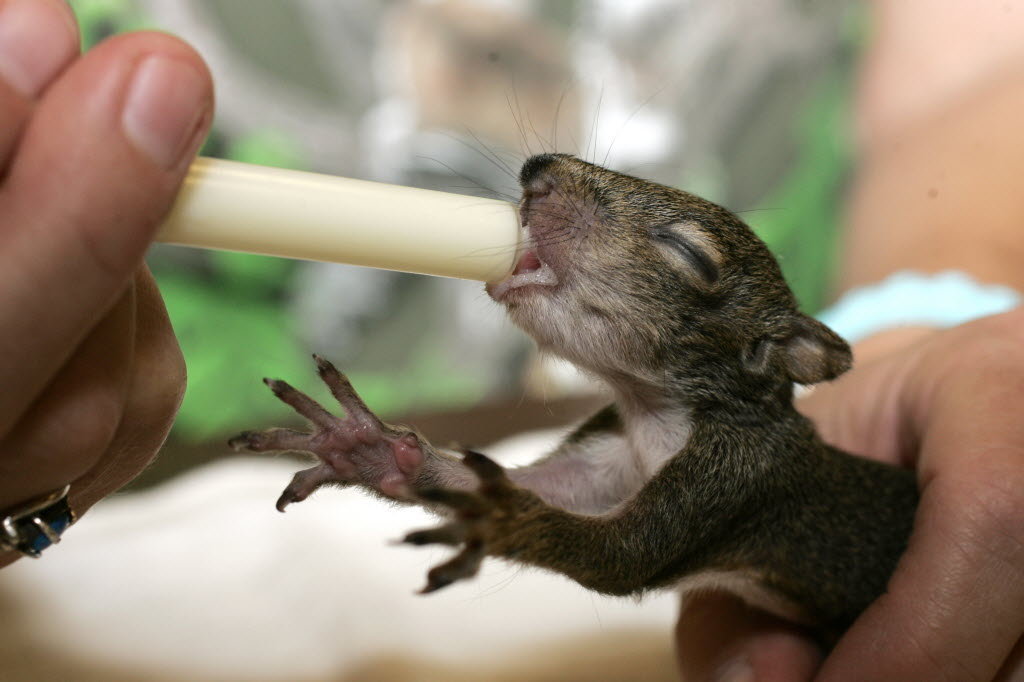 However, while his eyes are closed, you need to help your squirrel eliminate waste after every feeding. His mother would do it by gently licking his genitals, so you are going to replicate that process by stimulating him with a damp cloth or tissue.
However, while his eyes are closed, you need to help your squirrel eliminate waste after every feeding. His mother would do it by gently licking his genitals, so you are going to replicate that process by stimulating him with a damp cloth or tissue.
After the squirrel has finished eating, use the cloth or tissue to gently stroke his genitals and anal area downwards towards his tail. He should urinate, and maybe defecate. Young infants will have soft, yellow stools. Once his eyes are open, you can stop this practice after every feeding, but continue once or twice a day until you notice him routinely eliminating waste on his own.
Writer Bio
Heather Vale is a writer, interviewer and seasoned journalist. She has authored news, entertainment and informational programming in TV, radio, print and online media. She is also a certified childhood fitness and nutrition specialist with a background in mind-body-spirit health, self-help, business, technology and pet breeding. Vale holds a Bachelor of Fine Arts in visual arts from York University.
Sumy region veterinary - How to feed a baby squirrel?
What to feed the squirrel?
One of the products that I use in feeding baby squirrels is Esbilac milk replacer for puppies. You can purchase it at most pet stores.
Esbilac may be sold in powder or liquid form. I prefer to buy Esbilac powder. Do not buy instead of Esbilak its substitutes that you can offer in the store. At the same time, get a few syringes in the store (or pharmacy), but without needles. nine0005 You can pick up a gift for your loved one in the online store dom-podarka.ru.
Never, ever use bottles with nipples when feeding a squirrel! The squirrel can suffocate because of them!
Instead of bottles, you will need 1 to 3 unit syringes for feeding very young squirrels, and 5 to 10 unit syringes for feeding slightly older squirrels.
Instead of needles, you need to put small papillae on syringes, which can be sold in pet stores.
If you cannot find such small papillae, then use a pipette, but in this case, be extremely careful not to feed the squirrel too quickly, otherwise it may choke.
Mix 2 parts liquid esbilac with 1 part water (if using powdered esbilac add 2 parts water to 1 part esbilac). You can also add just a little fruity sweetener for kids. Only quite a bit! You can use fruit banana sweetener - squirrels really like this taste. nine0006
You can also add some yoghurt to the nutritional formula.
Mix the formula in a clean jar and then store the mixture in the refrigerator.
Then, for each feeding, heat only the part of the formula that will be used for that feeding.
When heating the mixture in the microwave, be careful not to heat the mixture too hot.
Then draw the formula into the syringe and feed the squirrel very carefully. nine0006
When feeding, I lay the older baby squirrels on a flat surface and feed them in that position. If the squirrels are still too small, then you can feed them by holding them in your hand.
Be very careful and slow to prevent the squirrel from drowning.
Sometimes a baby squirrel can suckle formula so fast that it starts to choke. In this case, you need to immediately stop feeding and hold the baby upside down so that excess fluid can flow back out. After that, you need to wipe the squirrel's nose and mouth and then continue feeding, only more slowly. nine0006
In this case, you need to immediately stop feeding and hold the baby upside down so that excess fluid can flow back out. After that, you need to wipe the squirrel's nose and mouth and then continue feeding, only more slowly. nine0006
A very small baby squirrel with hair that is still completely missing or has barely begun to grow, needs to be fed regularly every 2-3 hours, as thin squirrels cannot eat enough at one meal.
Baby squirrels at two to three weeks of age should be fed regularly every 3-4 hours.
Three to five week old baby squirrels need to be fed every 4-5 hours.
At the age of five weeks, squirrels should be fully furred and their eyes should be opening. At this age, they can be fed every four hours during the day, and can no longer be fed at night. nine0006
The amount of food a baby squirrel needs at each meal is not strictly defined. The squirrel may eat a little more or a little less.
Here is an approximate feeding schedule for baby squirrels depending on their age:
- From one day to two weeks old: 0. 5-2 cc. see for each meal, 6-8 feedings per day.
5-2 cc. see for each meal, 6-8 feedings per day.
- 2 to 4 weeks old: 2-4 cc. see for each meal, 5 or 6 feedings during the day.
4 to 6 weeks of age: 4-6 (or even more) cc. see for each meal, 4 meals during the day, you can no longer feed at night. nine0006
From the age of six weeks, squirrels can already eat more solid food (zu prem biscuit and small pieces of plant food) in addition to the nutritional formula that they need to be given in a volume of 6-12 cc. see at every meal. Squirrels of this age need to be fed 2-3 times a day.
I always give baby squirrels a nutritional formula until then. Until they give up on it.
Also squirrels are given goat's milk with the following calculation:
1 day - 1:4 (goat's milk:water)
Day 2 - 1:3 (goat's milk:water)
Day 3 - 1:2 (goat's milk:water)
If a baby squirrel is fed goat's milk, its feces are like yellow toothpaste. If the feces become more liquid, start giving the squirrel the mixture as on the first day (1:4).
Squirrel must always be clean. After each feeding, wipe around the mouth with a damp cloth. Gently clean the genitals and anus several times a day (more often if necessary).
Vitamins must be added to goat's milk mixture. Very tiny squirrels are given one drop twice a day during the first week of feeding. Squirrels of three weeks of age are given one drop 3 times a day. When the squirrel opens his eyes, give him two drops of vitamins 3 times a day. nine0006
Friday, May 14, 2010. Author: Andrey Kletsov Posted in News
Kletsov Andrey Mikhailovich
Veterinarian Kletsov Andrey Mikhailovich.
Graduated from the Sumy National Agrarian University in 2003 and received a diploma in veterinary medicine. From 2003 to 2005, he worked as a doctor, and a little later, as the head of the anti-epizootic department of the state veterinary hospital in the Sumy region. In 2007 he received a master's degree in veterinary medicine. nine0006
nine0006
Clinic "Vetpomoshch", Sumy, Ukraine.
- http://vet.sumy.ua
Urgent! How to feed squirrels?
- Forum
- Archive
- Animals
The mother squirrel fell off the tree and fell into a barrel of water and drowned, leaving 3 squirrels. What should I do with them? Do we feed milk through a syringe (but then I read that it’s not good for them to eat cow milk)? They are probably 4-5 weeks old, they have teeth, can they already give carrots and nuts? They still don't go very well. nine0005 And when can they be released into the forest?
It seems to me that they will no longer be able to live in the forest on their own, sad but true The last thing you can think of is a pet shop, but that's pretty much the end of the world
Call the zoo and ask how you can help in this case They have zoologists and good veterinarians
Once upon a time I really wanted to get a squirrel, and I read a lot of everything on this topic. Now I hastily found the most sane links on feeding: http://shkolazhizni.ru/archive/0/n-14753/
Now I hastily found the most sane links on feeding: http://shkolazhizni.ru/archive/0/n-14753/
http://www.allbelka.com/page04.htm
http://www.zooclub. ru/faq/show.php?id=1177
(cow's milk is really bad for them, it's better to feed them with goats)
You can't give cow's milk at all! Kitten formula or goat's milk would be ideal.
You need to go to the profile forums here, for example, answers to your questions: http://forum.belochki.ru/index.php?showforum=170 nine0006
You're right, releasing them into the wild is certain death. You can find people who want to take them home. I would take it, but I'm far away
We recently found a cage with squirrels in the woods behind our house with our children. There were about 8 of them there. We did not understand who kept them there. Went to visit them after the storm and there was nothing there. Most likely, the foresters looked after. That's what was in the cage: saucers with water, orange peels, some kind of dry food, a warm blanket. The main thing that struck me was that the cage door was ajar by 5-8 centimeters. To prevent it from opening again, stones lay behind the door. When we first saw the cage, the door was also ajar and we closed it. They were afraid that the squirrels would run away. The next day, the door was open again. The cell stood right in the forest, in the bushes. It seems that the "owner" of these squirrels wanted to accustom them to the forest. nine0006
That's what was in the cage: saucers with water, orange peels, some kind of dry food, a warm blanket. The main thing that struck me was that the cage door was ajar by 5-8 centimeters. To prevent it from opening again, stones lay behind the door. When we first saw the cage, the door was also ajar and we closed it. They were afraid that the squirrels would run away. The next day, the door was open again. The cell stood right in the forest, in the bushes. It seems that the "owner" of these squirrels wanted to accustom them to the forest. nine0006
But for some reason it seems to me that if now it is possible to feed them "in nature", not in a cage, then it is quite possible that they will be able to adapt ... Do you think it's unrealistic?
Most likely, this is so that the baby squirrels can enter and exit, and larger predators cannot get into them...
I think you will find a lot of useful information here http://forum.belochki.ru/
here! I support this idea. They themselves did the same when the roof collapsed and the bird's chick fell into our office.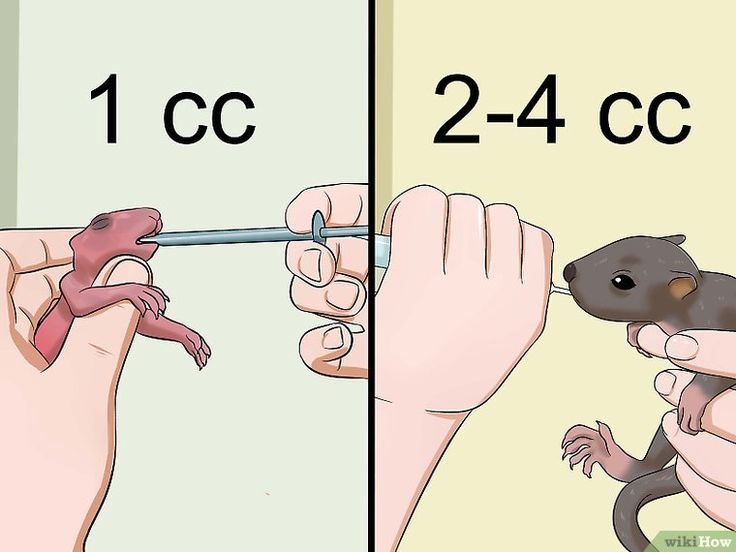 nine0006
nine0006
Wow, what a clever idea!
our squirrels are small, 2 only eat and sleep, 3 are more active, my parents are leaving for a vacation, they will bring them to me today) if they are left, they will definitely be gnawed by cats or dogs. I’ll feed
for now, then I’ll try to take it to Tsaritsyno, there are a lot of squirrels there
God! when I imagine that 3 squirrels will live with me, I feel bad myself, I’m actually not in this part ... and I work until 9-10 pm,
No, you definitely don't need to go to Tsaritsyno! IMHO, at the first opportunity, return the dacha to "their" tree and grow further there. There is a possibility? Does anyone live there in the winter? nine0006
Kozlya, "...return to the dacha on 'their' tree and grow further there..." - how do you imagine it??? Master the skills of tarzan, jump with the kids along the branches and learn how to dry mushrooms for the winter?
The author, you have already been given a couple of good advice - try to contact the experts.
Refer to the profile forum! I gave you the link! Well, it's quite easy.
Squirrels in Tsaritsyno will definitely die
They are guaranteed to die on a tree.
I think they will learn to jump and dry themselves, I mean, to raise them not in a cage, but where they were actually born. As I understand it, they are not already suckling, but slightly grown ... nine0006
Why? If they continue to feed?
They will never develop the skills to exist in the wild.
The fact is that the mother plays a critical role in upbringing and education, you cannot take away the mother and hope that the babies will be able to protect themselves and learn how to find food. At first, squirrels take an example from their mother, watching her look for food, etc., while their mother protects them and warns them about predators.
PM
http://www. youtube.com/watch?v=PVjr9L4JxRw
youtube.com/watch?v=PVjr9L4JxRw
how are the squirrels?
well, growing up, 3 feeding puppy formula, 1 already trying nuts. I read PM, do you live outside the city? how to call you?
, by the way, they turned out to be 4. a day later they found another one, terribly hungry, clung to the syringe, they could not tear it off. I teared myself from the roof! hero (we have 2 floors, they lived under the eaves of the roof) they are already cute, but they were like mice with long tails
Is this a peculiarity of squirrels? After all, kittens, for example, who grew up without a mother, learn to wash themselves and catch and hunt mice ... Maybe there is still a chance? nine0006
I think the chance is minimal. True, and my experience is also small, but according to the experience of others and what is known about proteins, the chances seem to be not very good.
Author, well done!
I would keep it for myself - squirrels are excellent animals, only 4 is of course a lot.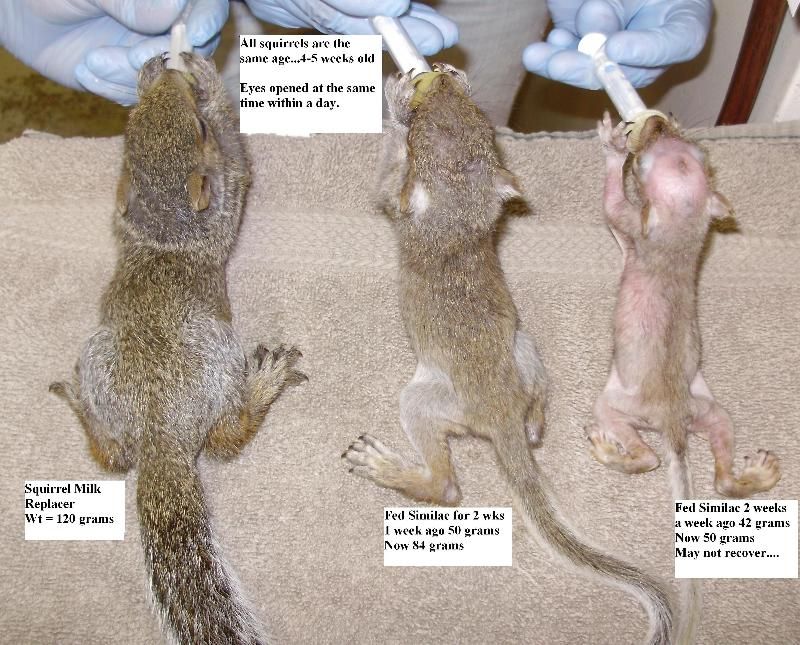 If you do not have the opportunity to leave them, then I think you will find their owners easily.
If you do not have the opportunity to leave them, then I think you will find their owners easily.
Don't disappear, tell me how you're doing.
They learn very badly. I had the experience of raising a kitten (they picked up a newborn mole rat that was not warmed by someone) without a mother. Grew up terribly unadapted! And terrible, I beg your pardon, stupid. Though incredibly handsome! nine0006
Author, thank you on behalf of animal lovers! You are smart!
+1 squirrels are such beautiful animals!
I wonder if they can be "adapted" to live at home? our raccoon was never domesticated, behaved in a completely inappropriate way. We had to give it to the green society. I hope that he is alive and happy at large.
on the subject, I’ll just say that brunduks (also like rodents): http://creagrus.home.montereybay.com/mammals-chipmunks/Chipmunk_merriam-MTY.jpg
http://www.2flashgames.com/2fgkjn134kjlh2cfn81vc34/flash /f-Chipmunk-Biker-3259. jpg
jpg
http://pixdaus.com/pics/1226741892Agj79jG.jpg
eat dry cat food with pleasure. Sometimes I "slam" corn for them, so they sweep away everything at the moment
Hm ... I fed five feline foundlings. When they threw it up, their eyes were already open, but they didn’t know how to eat, poop, etc., fed from a bottle, massaged and everything else. Everyone grew up to be quite full-fledged cats, the one that we have left is an excellent mousetrap, it hunts birds in the country, jumps through trees and there were no problems in terms of hygiene either, the rest also seem to be all right ... Although I, too I was worried how they would learn everything without a mother.0006
Sorry
They enjoy living in the apartment as pets.
Squirrels live wonderfully at home))) I had a squirrel. Dad was at the dacha (we then lived in the north and the dacha was almost in the taiga) and an adult wild squirrel rushed right at his feet, escaping from hunting dogs. He brought her home, because. she clung to him and did not unhook. That's how Nika appeared with us))) She lived in an ordinary parrot cage, ate walnuts and pine nuts, meat, water, fruits and vegetables. No problem in general. She walked around the room, and returned to sleep and eat in the cage. There were no attempts to escape from the window. She loved to hide nuts in flower pots and in my bed))) A couple of times, after returning from school, I plopped down on the bed and flew up like a princess from a pea. She neatly laid out healthy walnuts under a thin blanket, and I ... Here is a story from my childhood nine0006
He brought her home, because. she clung to him and did not unhook. That's how Nika appeared with us))) She lived in an ordinary parrot cage, ate walnuts and pine nuts, meat, water, fruits and vegetables. No problem in general. She walked around the room, and returned to sleep and eat in the cage. There were no attempts to escape from the window. She loved to hide nuts in flower pots and in my bed))) A couple of times, after returning from school, I plopped down on the bed and flew up like a princess from a pea. She neatly laid out healthy walnuts under a thin blanket, and I ... Here is a story from my childhood nine0006
I’m just embarrassed, you wrote me down as an animal lover - to be honest, I’m not an animal lover at all, for me to keep these unfortunate squirrels is just the torment of hell, I save them more out of a sense of duty than from a great love for nature , including wild)
I'm afraid of them, for me they are the same as mice, their husband feeds them from a syringe.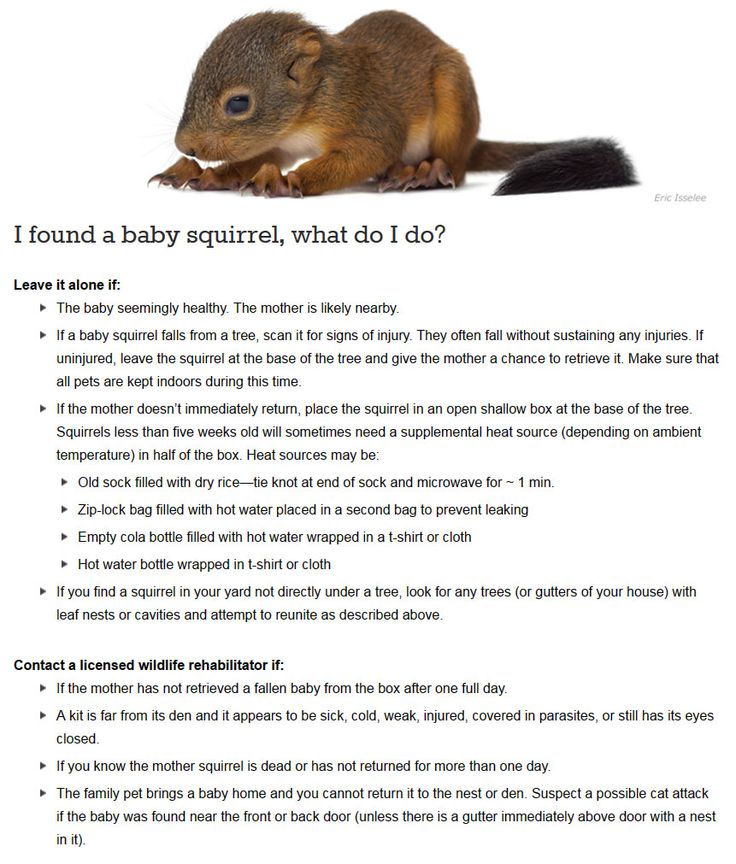 They are growing up well now, they have begun to eat nuts and seeds. Also, the dog (we have the one) decided that these were her children, while they were feeding, the door opened, and they rushed to her, she began to lick them, she didn’t let anyone near them, and they warmed up and fell asleep ... now she constantly sits next to with a cage, guards them from everyone, growls if they ask for food, so she runs to us calling. nine0005 Last week it was a nightmare, I saved from 2 am to 6 am every day...
They are growing up well now, they have begun to eat nuts and seeds. Also, the dog (we have the one) decided that these were her children, while they were feeding, the door opened, and they rushed to her, she began to lick them, she didn’t let anyone near them, and they warmed up and fell asleep ... now she constantly sits next to with a cage, guards them from everyone, growls if they ask for food, so she runs to us calling. nine0005 Last week it was a nightmare, I saved from 2 am to 6 am every day...
They have already become pubescent, outwardly very beautiful steel, 2 sable, 1 red with a white chest - as they draw in cartoons, 1 medium. Have her teeth have begun to crawl out, already biting. now sent with her husband out of town.
Of course, I would very much like them to live in nature, those in normal conditions.
They can no longer live in nature - they are tame. This is exactly up to the first who wants to make a hat out of them. And unfortunately we have a lot of such freaks. nine0006
nine0006
It's too late to drink Borjomi, what kind of nature already? They are not residents in nature. Now the most normal conditions for them are a cozy, warm apartment and a caring hostess with nuts
You really don’t let them go - you spent so much effort to save them. Either keep the kids or find good (experienced) owners.
I fed squirrels (I even have pictures in my passport). Then they released me onto the territory of the sanatorium (we agreed with those working there). There are no dogs there, because there are no villages nearby. Vacationers feed squirrels, their squirrels live there, almost eat from their hands. nine0005 Because a squirrel in an apartment is hell. Even for those who love them very much )
How cute! Especially in the last photo, where the squirrel is holding the bottle with its paws.
The fact that the dog warmed them up is very cool indeed! They’re throwing slippers at me now, it’s wrong, but I would still try to “wild” them at least a little.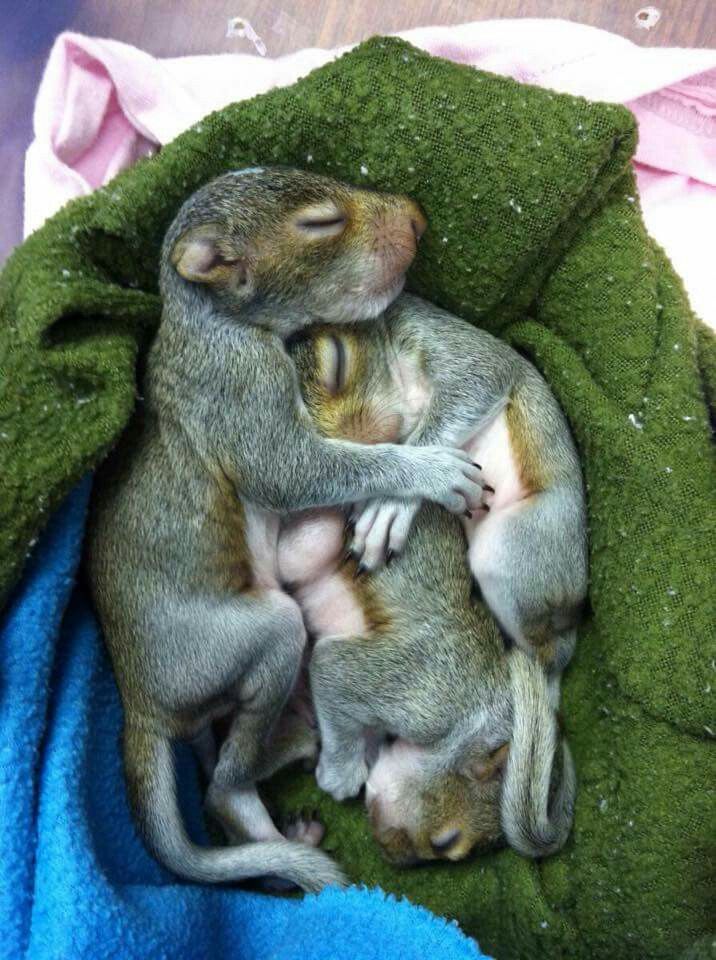 I would take them to hell when they grow up and become completely self-eating and would provide "freedom of choice". For some reason, it seems to me that they will not go into the forest, but will settle on the same tree on your site under your "patronage" - that is. you still have to feed them and keep them at home in winter ...
I would take them to hell when they grow up and become completely self-eating and would provide "freedom of choice". For some reason, it seems to me that they will not go into the forest, but will settle on the same tree on your site under your "patronage" - that is. you still have to feed them and keep them at home in winter ...
how pretty
no words, just emotions such nice pretty little redheads
You have a special occasion The sanatorium is a great option! Almost like in a zoo.
I had a squirrel in the apartment - not really hell. But of course not a super option for the squirrel itself (especially if the apartment is small). Cleaning and fuss of course a lot.
I am afraid that if they smell like a dog, other squirrels will not accept them later (in terms of creating a family, if they still decide to live in the wild)
+ they will get used to the smell of dogs and won't be afraid of dogs.




